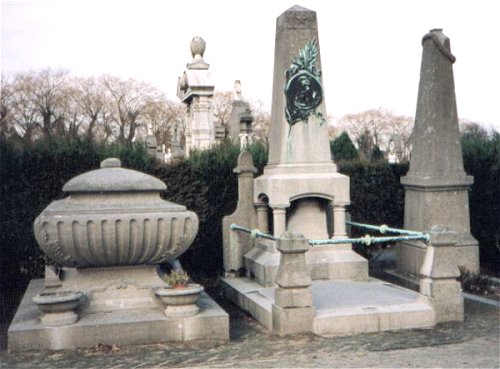Rysselberghe's Telephone
Today, we meet the forgotten inventor of the long-distance telephone. The University of Houston's College of Engineering presents this series about the machines that make our civilization run, and the people whose ingenuity created them.
We aren't especially fair in naming the heroes of invention. Who, after all, were the real heroes of the electric light, the computer, or the railroad train? Whose key idea made the typewriter or the internal combustion engine succeed? When all's said and done, these questions are seldom resolved.
Take the telephone. In the United States we honor Alexander Graham Bell. But he improved on earlier telephone work by two Germans, Reis and Helmholtz. And not just the Germans had been on the trail. Eleven years before Bell's patent, an American named Coopersmith was arrested when he tried to raise money to build a telephone system. After the arrest, a strident Boston Post editorial cried:
Well-informed people know it is impossible to transmit the voice over wires and that were it possible to do so the thing would be of no practical value.
By 1880, only four years after Bell's patent, America had installed 60,000 telephones in 100 exchanges. Predictably, the public started asking what stood in the way of inter-city phone systems. Why couldn't they have long-distance service?
We were given long-distance systems soon enough by François Van Rysselberghe. He was a brilliant Belgian engineer who's almost unknown today. He became a professor in the Ostend School of Navigation while he was still a teenager, and he was in his mid-thirties when he took an interest in telegraph and telephone systems.
The first phone lines were, for convenience, usually strung right alongside existing telegraph lines. But the strong electric pulses in the telegraph wires induced currents in the phone lines and interfered with transmission. Then Rysselberghe made one of those wonderfully bold steps that cast an old problem into an entirely new form. He said, why not run both signals on the same line! He turned the problem into one of signal retrieval.
When Rysselberghe invented circuits to separate the telephone and telegraph signals, we suddenly had means for carrying telephone signals over really long distances. In 1884 he telephoned the music of Gounod from a Brussels concert hall to astonished listeners in Antwerp. But his ambitions ran to distances that were only to be found in America.
In 1886 he built a system that carried conversation between New York and Chicago. He quickly went on to develop systems all over South America and Europe. Then, in 1893, his brief, bright career ended abruptly in his death. We've long since left the use of telegraph wires as phone lines, and Rysselberghe has been forgotten. But imagine, if you can, how the telephone would have developed if he hadn't made that wonderfully clever step that brought the telephone so quickly to the heart of everyday life.
I'm John Lienhard, at the University of Houston, where we're interested in the way inventive minds work.
(Theme music)
Tucker, D.G., François van Rysselberghe: Pioneer of Long-Distance Telephony. Technology and Culture, Vol. 19, No. 4, 1978, pp. 650-674.

Van Rysselberghe's grave and monument. (Photo by Anne-Mie Havermans, Antwerp.)